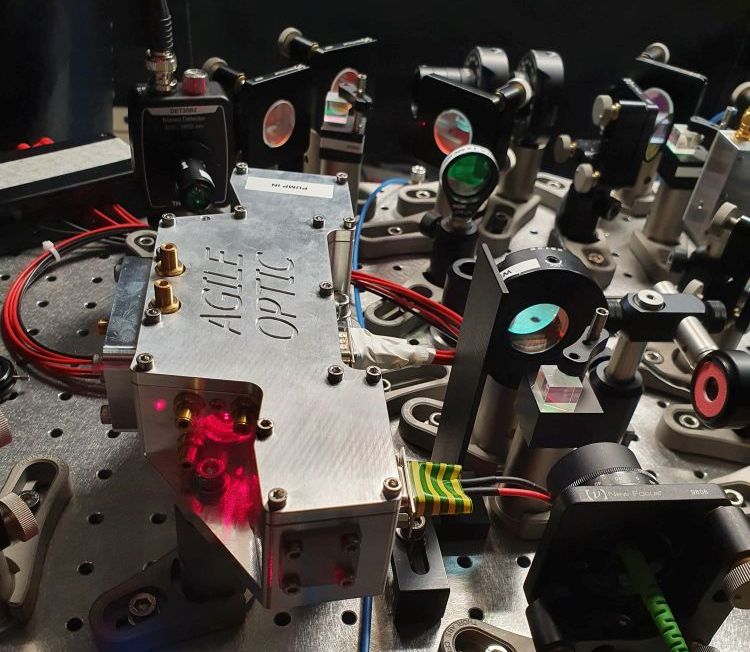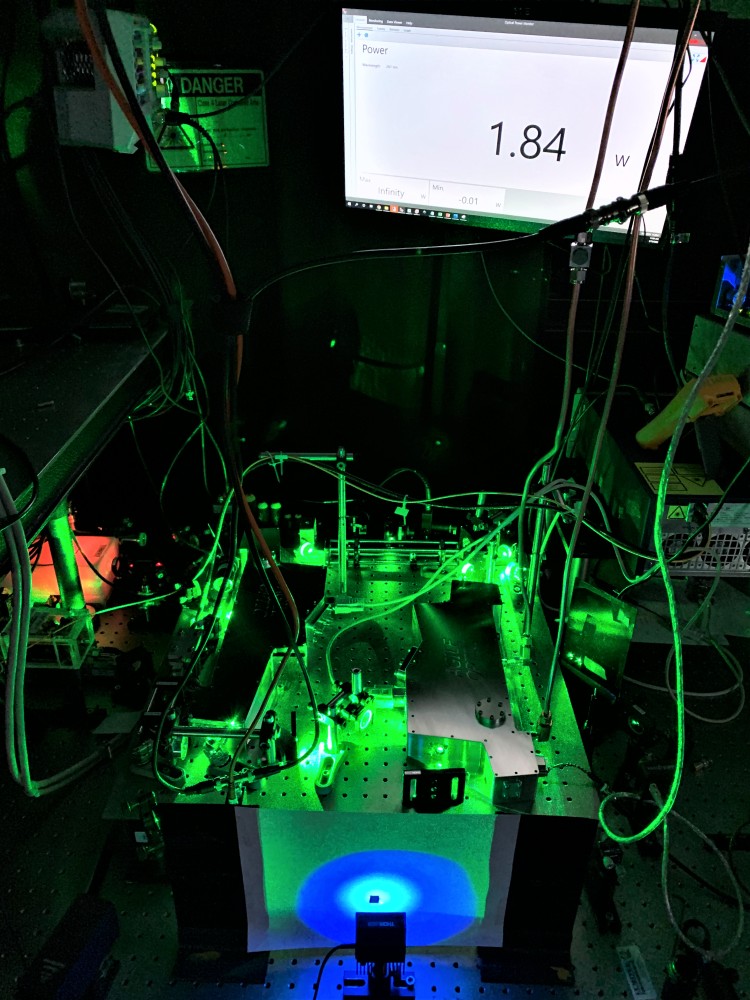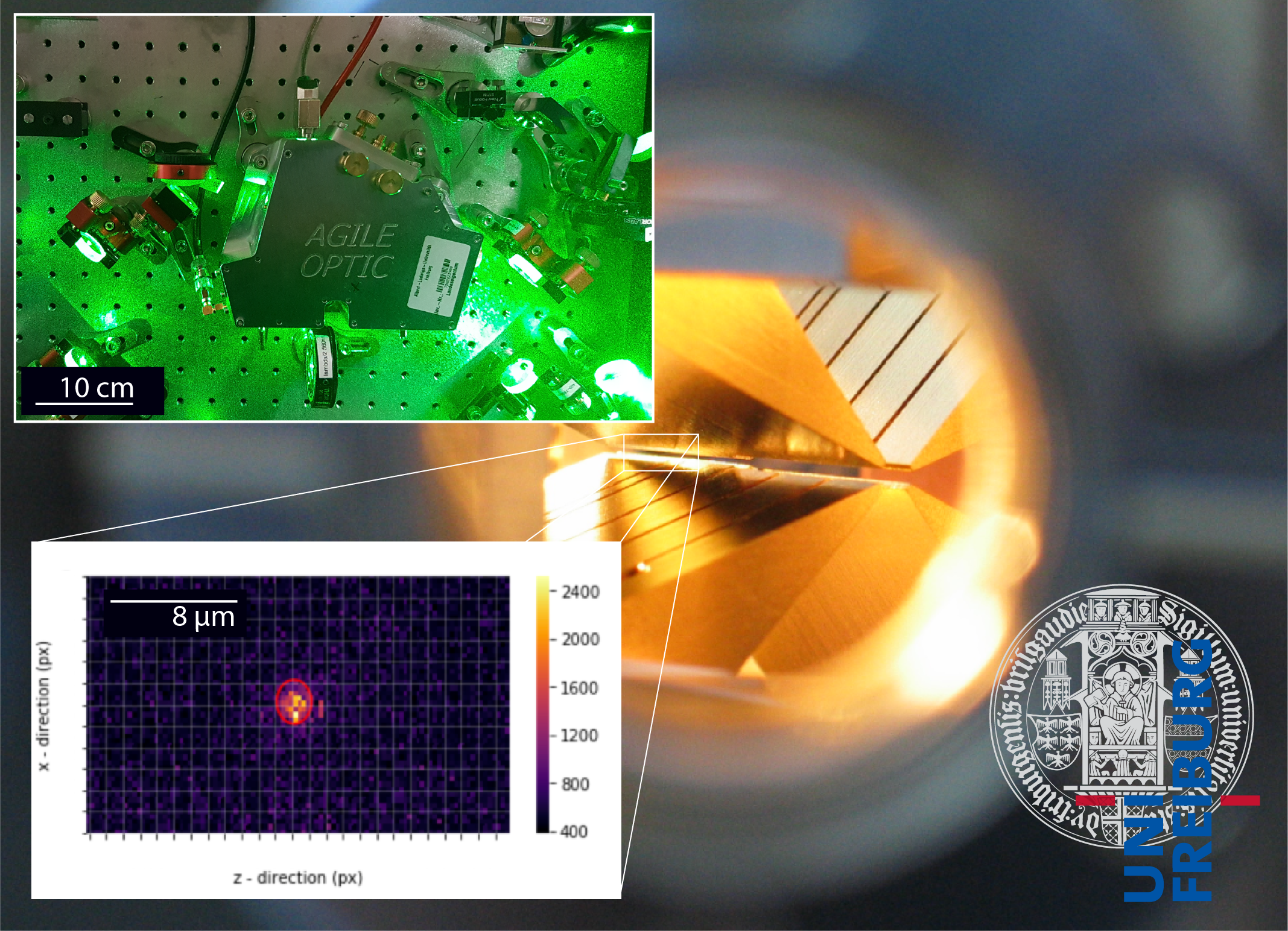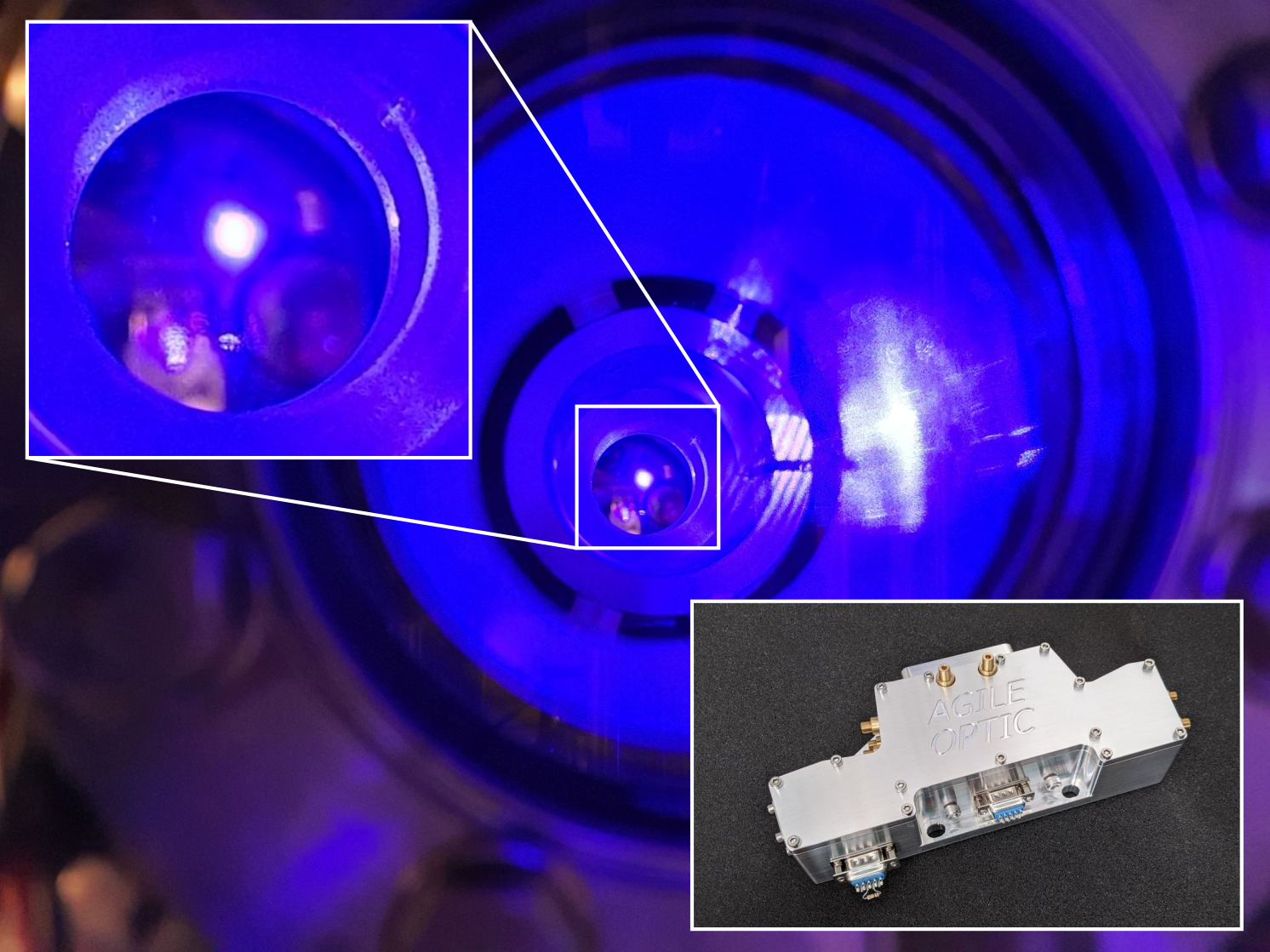Customer references
Our resonators are successfully employed in a diversity of experiments around the globe. In the following we provide some references.
SHG cavities for 522 nm and 261 nm generation
The group of Daniel McCarron from the University of Connecticut set up two consecutive SHG cavities to produce
2 Watts of cw light at 261 nm by frequency-quadrupling the output light from a fiber laser system. The resonator housings for both doubling steps (1044 nm to 522 nm and 522 nm to 261 nm) were custom built by Agile Optic GmbH for the group´s application: laser for cooling and trapping aluminum monochloride.
More details are described in the following publication in Optics Express:
https://doi.org/10.1364/OE.441741.
Additional information and updates are given on the group´s website:
http://themccarrongroup.com/.

High-power 463 nm laser light to laser cool molecules
"A high-density ultracold gas of polar molecules has a wide range of new applications. It can be used to study a dipolar quantum gas, test fundamental physics, and store and process quantum information efficiently. An array of polar molecules, all interacting with each other via controllable and strong interactions, can serve as a universal simulator for more complex quantum systems that cannot be modeled by a computer. Simulating such strongly-interacting many-body systems from the bottom up will aid the understanding of fascinating phenomena such as high-temperature superconductivity and exotic forms of magnetism.
To achieve this goal, our group at the Imperial College in London uses lasers to cool the diatomic molecule aluminium monofluoride (AlF). The main cooling and repump transitions lie in the DUV near 227.5 nm and 231.7 nm, respectively. To generate high-power DUV light it is common to frequency-quadruple near-infrared light with two successive stages of SHG. Here, both stages have been designed and built by Agile Optic.
The first SHG stage reaches a record doubling efficiency of more than 85%, providing us with more than 3.2 W of blue light at 463 nm. This is an ideal starting point for the second SHG stage.
The second SHG stage generates more than 500 mW in the DUV."
—Dr. Stefan Truppe
(London, UK)

650 nm for quantum frequency conversion
"We envision a future quantum computer to be hybrid device that comprises both cold atom/ion and solid state qubits. Quantum frequency conversion is required to interconnect these platforms. Within the German Cluster of Excellence ML4Q, we set up the link between GaAs quantum dots (around 850 nm) and Yb+ ions (370 nm) by employing sum frequency generation in PPKTP crystals. The required pump light has a wavelength of about 650 nm. A few 100 mW are required to saturate the nonlinear conversion process, and the light needs to be tunable by about 30 nm to match the variable emission wavelength of the quantum dot. These two criteria cannot be fulfilled by a single diode laser, nor by single-pass SHG in a waveguide or bulk crystal. Here, we employ an amplified diode laser combined with an SHG cavity to generate broadly tunable and powerful light around 650 nm. The entire setup has been working very reliably for three years already. It has been shipped to Jülich multiple times for measurement campaigns and operated there in a non-airconditioned room, without much need for realignment."
Publication: https://opg.optica.org/ol/abstract.cfm?uri=ol-47-7-1778
—Prof. Dr. Simon Stellmer
(Bonn, Germany)
428 nm for Zinc spectroscopy
The group of Prof. Dr. Simon Stellmer from the University of Bonn set up a SHG cavity that generates
3.3 W of cw light at 428 nm from a Ti:Sapphire laser at 856 nm.
The resonator employed is one of Agile Optic´s standard products.
Additional information on the group´s research can be found here:
https://www.pi.uni-bonn.de/stellmer/en
SHG cavities for 560 nm and 280 nm generation
"Since 2003, our group develops new tools and methods for quantum simulation research based on trapped atomic ions (https://www.qsim.uni-freiburg.de). Robust laser systems delivering light near 280 nm with output powers between 0.1 to 0.5 W are key in our work. Background image: View into our ultra-high vacuum chamber that holds a linear radio-frequency trap used for storing individual atoms. Top inset: Laser setup, including a cavity for second harmonic generation of 280 nm light from Agile Optics GmbH, used in our experiments for coherent control of electronic and motional degrees of freedom. Bottom inset: False colour fluorescence image of a single trapped Mg ion."
—Dr. Ulrich Warring and Prof. Dr. Tobias Schaetz
(Freiburg, Germany)
SHG cavity for 423 nm generation
The group of Prof. Dr. Andreas Hemmerich from the University of Hamburg set up a SHG cavity that generates more than 800 mW of cw light at 423 nm from a diode laser at 845 nm that is amplified in a TA system.
The resonator used is one of Agile Optic´s standard products.
Additional information on the group´s field of research is given on the following website:
https://www.physik.uni-hamburg.de/en/ilp/hemmerich.html.




